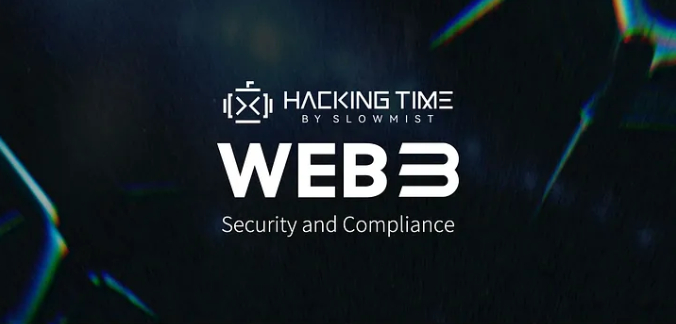“.. one of the primary attractions of this technology was the conceptual elegance of the decentralized network and the open source software, which was updated and maintained by all of its users instead of one author.”
― Nathaniel Popper, Digital Gold: Bitcoin and the Inside Story of the Misfits and Millionaires Trying to Reinvent Money

Deepika Deshpande
Published in Web3 Blog – May 08, 2025
Since its inception in 2009, cryptocurrencies have faced wide-ranging criticism from multiple fronts. Environmentalists condemn their massive energy consumption. Regulators highlight risks of financial fraud and money laundering. Traditional financial institutions point to extreme volatility and lack of intrinsic value. Central banks perceive challenges to their monetary authority, while economists question cryptocurrency’s practical utility in everyday transactions.
Despite these objections, crypto continues to thrive, propelled by advocates who champion digital currencies as the solution to centralized control of money. These proponents argue that traditional financial systems concentrate power among a small number of institutions, making them vulnerable to manipulation, censorship, and inflationary policies. Cryptocurrencies like Bitcoin, operating on decentralized blockchain networks, offer an alternative by enabling peer-to-peer transactions without intermediaries. This decentralization theoretically empowers individuals to hold and transfer value independently, with enhanced transparency and security.
Yet this critical promise of decentralization remains largely unexplored. Do cryptocurrencies truly distribute power, or do they merely shift it to a new elite? While blockchain advocates champion decentralization, we must examine whether its core promise of democratization withstands scrutiny.
Why Decentralization Matters
Decentralization forms the cornerstone of cryptocurrency’s identity and purpose, and serves several critical functions that define its value and appeal. It ensures censorship resistance by allowing transactions to occur without interference from governments or central authorities. By distributing control across a network rather than relying on a single point of failure, decentralization enhances security and resilience. It also enables a trustless environment where users can rely on transparent, protocol-driven mechanisms instead of intermediaries. Moreover, decentralization prevents monopolistic control and ensures Sybil resistance. This safeguards the system from domination or manipulation by any single entity and preserves the integrity and fairness of the network.
If Bitcoin or any cryptocurrency becomes overly centralized – whether through mining pools, exchanges, or governance structures – it risks undermining its foundational ideals. Therefore, maintaining true decentralization isn’t merely a technical feature but a necessary requirement to preserve the ethos and functionality of cryptocurrency.
The Challenge of Measurement
Measuring decentralization in cryptocurrency is inherently complex. First, it is multi-dimensional. Different metrics – such as node distribution, validator distribution, and token distribution – highlight different facets of decentralization, often leading to subjective interpretations. Second, the landscape is constantly evolving, with new protocols and infrastructure reshaping how networks operate. Architectural diversity, including varying blockchain designs and consensus mechanisms, also makes direct comparisons difficult. Moreover, decentralization is not static; it shifts over time with network growth, community engagement, market events, and technological progress. Reliable and consistent data is also hard to obtain, particularly for older or lesser-known networks, and a large portion of crypto activity occurs off-chain, further complicating measurement. Finally, it is difficult to distinguish real users or participants from fake identities – or even determine whether wallets are controlled by different individuals or the same entity.
Empirical Evidence of Centralization
In 2024, Singapore Management University’s Web3 Center conducted a pioneering study to investigate the degree of decentralization in Bitcoin.
Analyzing Bitcoin’s transaction history from March 2009 to May 2024, the research identified distinct phases in BTC holdings distribution. During the first year if its existence, there was a rise in decentralization in BTC holdings. This was followed by a sharp decrease in the subsequent year. From 2011 onward, decentralization gradually increased, albeit with notable fluctuations driven by specific events. For instance, the October 2017 Bitcoin Gold fork—intended to democratize mining by enabling it on consumer-grade hardware—did not lead to sustained decentralization. Instead, Bitcoin Gold’s price decline prompted major market players to reallocate assets back into Bitcoin, thereby increasing concentration levels.
Further analysis using Google’s PageRank algorithm revealed that fewer than five addresses held uniquely significant positions in controlling transactions, indicating a notable centralization in transaction control. To monitor these dynamics, the Web3 Center will update this data continuously and develop new decentralization indices to track the blockchain’s evolution over time.
Other research findings support these results. As of early 2024, the Hashrate Index created by Luxor Technology Corporation showed that the top five mining pools controlled over 75% of total hash power. A September 2024 report by the New York Digital Investment Group found that while Bitcoin operates as an open-source, peer-reviewed blockchain, protocol updates are largely managed by a small group of 40–60 highly skilled developers who oversee changes to the codebase.
The Philosophical Paradox
As cryptocurrency systems transition from niche technological experiments to mainstream financial infrastructure, the concept of decentralization – and its associated ideals of trust, resilience, and transparency – demands rigorous examination. Specifically, we must test whether blockchain’s theoretical promise of trustlessness, grounded in decentralization and autonomous protocols, can withstand the practical challenges of human coordination at scale.
At the heart of this lies a core philosophical paradox: the uneasy relationship between trust, autonomy, privacy, and anonymity. Decentralized systems promote transparency through open-source protocols and consensus mechanisms, yet simultaneously embrace opacity through pseudonymous address ownership. This raises a fundamental question: How can we assess the true distribution of power in a system designed to obscure key aspects of identity? Can we genuinely trust a system that defines itself as trustless?
Ultimately, this paradox challenges the notion that decentralization alone can resolve deeply human issues like power concentration and systemic inequity. As crypto networks continue to evolve and entire mainstream usage, the path forward will demand not only technical innovation but also a deeper philosophical reckoning – with the limits of decentralization, the nature of transparency, and the irreducible role of human agency in all systems of governance and coordination.
______________________________________________
About the Author
Deepika is a post-doctoral research fellow at SMU’s Web3 center. In this capacity, she tracks the latest developments in the Web3 space, helps create awareness about Web3 through blogs and articles and contributes to Web3 research. She is a financial services industry leader, currently serving as Chief Operating Officer for a Singapore-based cross-border payments fintech, SingX. Her prior corporate experience includes 26+ years at Citi Asia Pacific. Deepika’s academic credentials include an MBA from the Indian Institute of Management (Ahmedabad) and a PhD from SMU (Strategy and International Business).

